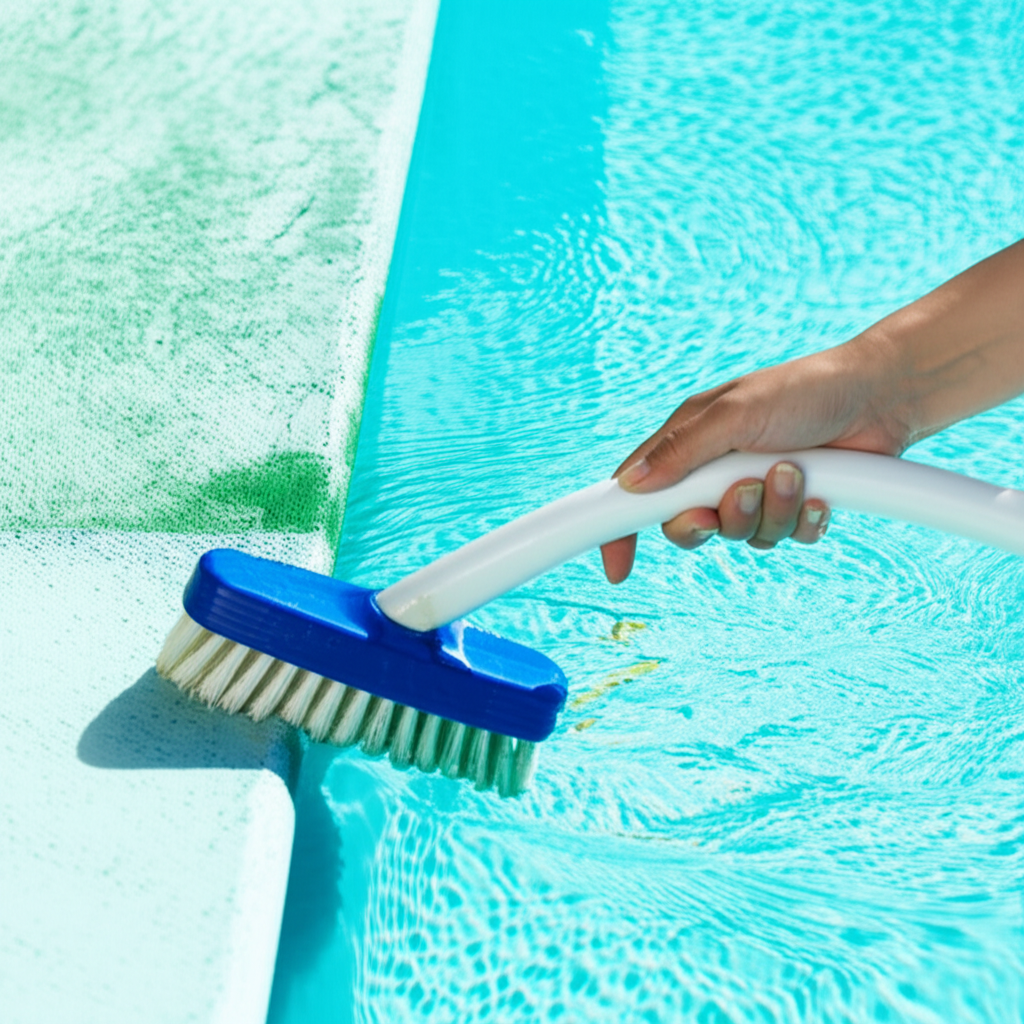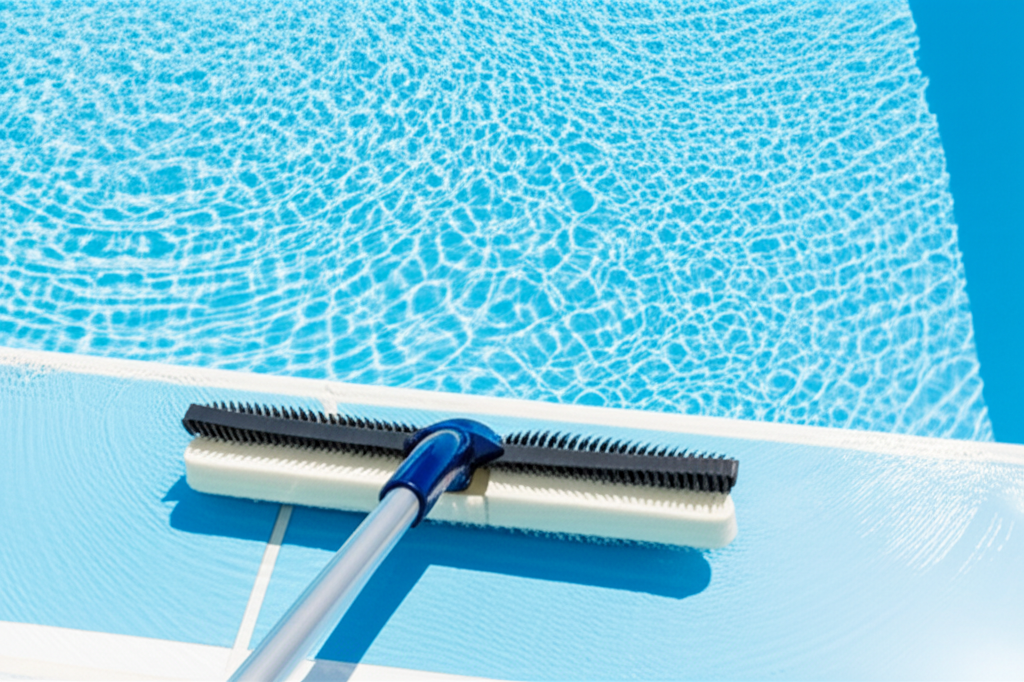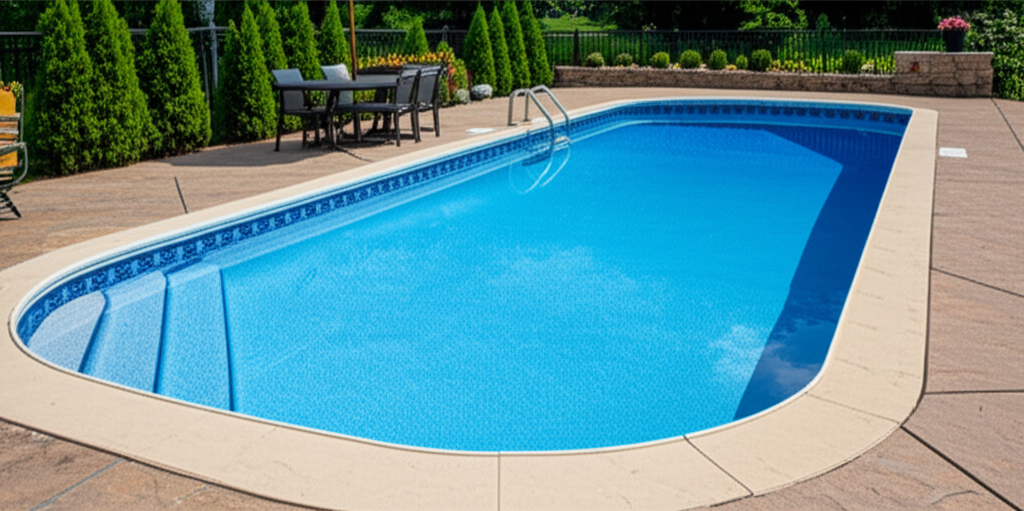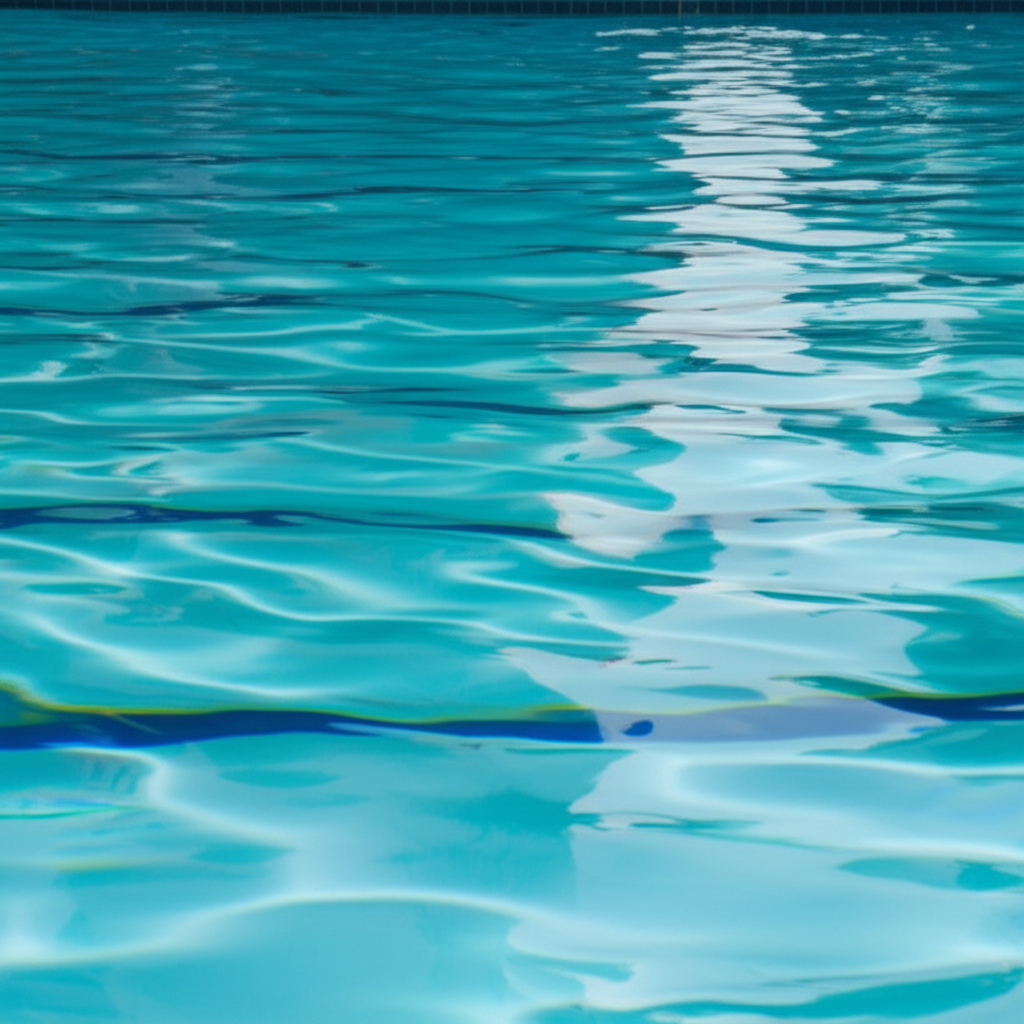- The Indispensable Role of Brushing Pool Walls
- Mastering the Art of Algae Brushing
- The Dynamics of Algae Prevention Through Brushing
- A Holistic Approach to Pool Maintenance
- Troubleshooting Persistent Algae Issues
Brushing Pool Walls is not merely a chore; it’s a fundamental pillar in maintaining a pristine, healthy swimming environment. While chemical treatments and filtration systems work tirelessly, the physical action of brushing plays an indispensable role in dislodging microscopic invaders and inert particles that cling stubbornly to your pool’s surfaces. This proactive step ensures your pool remains invitingly clear, sparkling, and free from the dreaded green tinge of algae.
The Indispensable Role of Brushing Pool Walls
Many pool owners underestimate the power of consistent brushing, viewing it as a supplementary task rather than a core maintenance activity. However, brushing goes far beyond aesthetics. It’s a critical defense mechanism against the proliferation of algae. Algae spores are ubiquitous, constantly entering your pool from the air, rain, and even swimsuits. Once they land on surfaces, they can quickly attach and begin to multiply, especially in areas with poor circulation or those that receive abundant sunlight.
Without regular physical disruption, these hidden algae colonies can establish themselves, forming a protective biofilm that makes them remarkably resistant to standard chemical treatments. Brushing breaks down this film, exposing the algae to sanitizers like chlorine and allowing them to be more effectively killed and filtered out. Beyond algae, brushing also helps to loosen dirt, dust, and other debris that settle on walls and floors, making it easier for your filtration system to capture them or for your vacuum to remove them. This contributes significantly to overall water clarity and reduces the strain on your filter.
Mastering the Art of Algae Brushing
Effective algae brushing requires more than just a quick scrub. It demands a systematic approach and the right tools. The primary goal of algae brushing is to physically remove the clinging organisms and debris, regardless of whether you’re tackling a full-blown invasion or simply performing routine maintenance.
Choosing Your Brushing Tools:
The type of brush you use is crucial and depends primarily on your pool’s surface:
Nylon or Poly Brushes: These are gentle and versatile, ideal for vinyl liner or fiberglass pools, which can be easily scratched by harsher brushes.
Stainless Steel or Wire Brushes: Reserved for concrete or plaster pools, these stiffer brushes are excellent for dislodging tough algae or calcium deposits. Never use a wire brush on vinyl or fiberglass, as it will cause irreversible damage.
Combo Brushes: Some brushes combine nylon and wire bristles, offering a balance for plaster pools that might not need the full aggressiveness of a wire brush.
Technique for Effective Brushing:
1. Work Systematically: Start at one end of the pool and work your way around, brushing every square inch of the walls, steps, and slopes. Pay extra attention to corners, crevices, and areas that receive less circulation or sunlight, as these are prime breeding grounds for algae.
2. Use Firm, Overlapping Strokes: Apply firm but controlled pressure. Brush in downward or horizontal strokes, ensuring each stroke overlaps the previous one to avoid missing spots.
3. Brush Towards the Main Drain: Ideally, you want to brush debris down towards the main drain, where it can be drawn into the filtration system.
4. Target Shaded Areas: Areas shaded by trees, fences, or the house are notorious for algae growth due to cooler temperatures and less UV exposure. Give these spots extra attention.
5. Don’t Forget the Floor: While the focus is often on walls, don’t neglect the pool floor, especially during heavy algae outbreaks.
The Dynamics of Algae Prevention Through Brushing
Regular brushing extends beyond immediate clean-up; it’s a cornerstone of preventing algae development. When integrated with proper chemical balance and efficient filtration, brushing creates an environment hostile to algae. By constantly disturbing potential growth sites, you prevent algae from ever gaining a foothold.
Consider the timing of your brushing. For routine maintenance, brushing before vacuuming allows suspended particles to settle to the bottom, making vacuuming more effective. If you’re battling an algae bloom, brush thoroughly before shocking the pool or adding algaecides. This breaks open the protective outer layer of the algae cells, allowing the chemicals to penetrate and kill them more efficiently. Waiting several hours after shocking (or even overnight) before brushing again can further help dislodge dead algae and facilitate their removal.
A Holistic Approach to Pool Maintenance
While brushing pool walls is a critical component, it’s part of a larger ecosystem of pool maintenance. For truly effortless algae-free sparkle, consider it in conjunction with these other practices:
Chemical Balance: Regularly test and adjust your pool’s pH, alkalinity, calcium hardness, and sanitizer levels (e.g., chlorine). Balanced water maximizes the effectiveness of your chemicals.
Filtration: Ensure your filter runs for an adequate period each day (usually 8-12 hours) to properly circulate and clean the water. Clean or backwash your filter regularly.
Circulation: Ensure your return jets are angled to create a swirling motion in the pool, pushing water towards the skimmer and main drain to minimize dead spots where algae might thrive.
Algaecides: Use algaecides as a preventive measure or as part of a treatment plan for persistent algae, but remember they are often more effective after brushing.
Consistent algae brushing can dramatically reduce the need for aggressive chemical treatments and help you maintain a cleaner, healthier pool with less effort in the long run.
Troubleshooting Persistent Algae Issues
Even with regular brushing, sometimes algae can persist. If you find yourself consistently battling renewed growth shortly after brushing, consider these factors:
Inadequate Sanitizer Levels: Double-check your chlorine or other sanitizer levels. They might be too low to effectively kill algae even after brushing.
Poor Circulation: Are there “dead spots” in your pool where water doesn’t move much? Adjusting return jets or adding a supplemental pump might help.
Filter Issues: Is your filter dirty, clogged, or too small for your pool size? A poorly functioning filter won’t effectively remove brushed-off algae.
Phosphates: High phosphate levels (algae food) can lead to rapid regrowth. Test for phosphates and use a phosphate remover if necessary.
Brush Type: Are you using the correct type of brush for your pool surface? An ineffective brush won’t properly dislodge the algae.
By being diligent and observant, you can identify and address the root cause of stubborn algae.
In conclusion, the simple act of brushing pool walls is a powerful and often underestimated weapon in your pool maintenance arsenal. It’s an easy, cost-effective way to prevent algae growth, improve water clarity, and reduce the reliance on harsh chemicals. By incorporating regular, systematic brushing into your routine, you’re not just cleaning your pool; you’re preserving its beauty, extending its life, and ensuring that every swim is a refreshing, sparkling experience.




